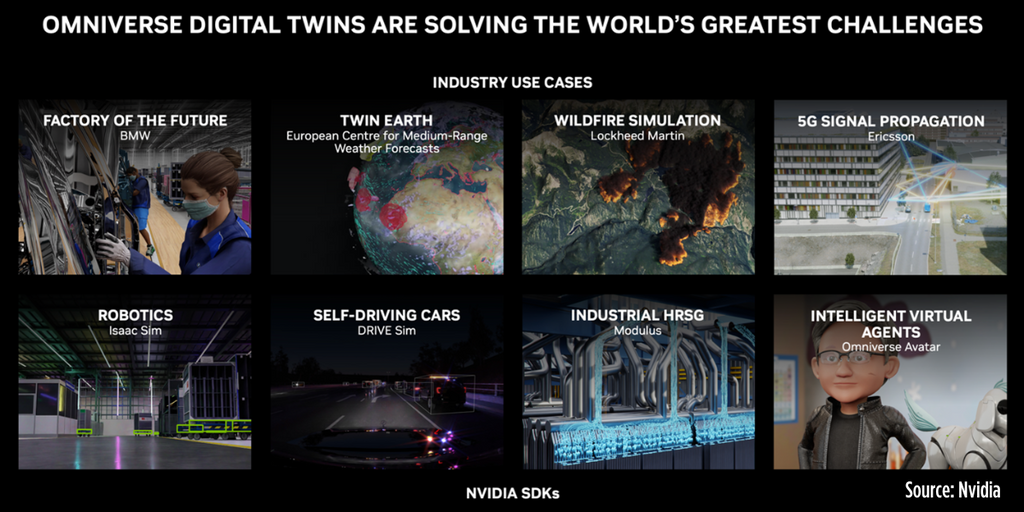Blog
26.Mar.2024
The Digital Twin Revolution: Transforming Industries with Virtual Simulations
The Revolutionary Impact of Digital Twin Technology on Industry
Introduction
Discover the transformative power of Digital Twin technology, a groundbreaking innovation reshaping industries by bridging the digital and physical realms. This blog delves into the essence of Digital Twins, their remarkable benefits, widespread applications, and the promising future of this digital replication technology.
In the realm of digital innovation, one concept that has steadily gained traction and is revolutionizing multiple sectors is the Digital Twin technology. In this blog, we will explore what Digital Twins are, their benefits, applications across various industries, and the future of this fascinating technology.

Understanding Digital Twin Technology
A Digital Twin is essentially a digital replica of a physical entity. At its core, a Digital Twin is a virtual model designed to accurately reflect a physical object, system, or process. This could range from a small component like a car engine to a large complex system such as an entire city. The technology relies on sensors installed on the physical objects to gather real-time data about its state and environment. This data is then used to create a dynamic digital model that updates and changes as its physical counterpart evolves. Digital Twin technology bridges the gap between the physical and digital worlds, providing deep insights into the lifecycle of products, enhancing efficiency, and enabling innovation.

Key Benefits of Implementing Digital Twins
The implementation of Digital Twin technology brings a multitude of benefits:
- Predictive Maintenance: By analyzing data from the digital twin, companies can predict when parts of a machine will fail or need maintenance, significantly reducing downtime and operational costs.
- Accelerated Innovation: Engineers can test out designs and simulate conditions quickly and efficiently, accelerating the innovation process while reducing the need for physical prototypes.
- Improved Decision-making: With real-time data and analytics, businesses can make more informed decisions, leading to improved outcomes and strategies.
- Personalized Customer Experiences: Companies can provide customers with valuable insights and personalized services based on the data obtained from Digital Twins.
Applications Across Industries

- Manufacturing: Used for optimizing the manufacturing process, monitoring equipment, and reducing production time.
- Healthcare: For personalized medicine, patient monitoring, and simulation of medical procedures.
- Aerospace and Defense: In designing and maintenance of aircraft, simulation of systems and parts for better performance.
- Urban Planning and Smart Cities: For urban planning, infrastructure management, and sustainability initiatives.
- Automotive: In vehicle design, safety analysis, and testing.
- Advanced Warehouse Management: Enhancing inventory accuracy, optimizing storage and logistics, and streamlining supply chain operations through real-time monitoring and simulation.
2024 NVIDIA GTC: The Emergence of Digital Twin Technology
In the 2024 NVIDIA GPU Technology Conference (GTC), the spotlight was on the strategic importance of Digital Twin Technology, signaling a substantial industry shift. NVIDIA announced plans to build a full infrastructure around Digital Twin Technology, underscoring its commitment to advancing this field. This development marks a significant milestone, highlighting how essential Digital Twins have become in bridging the physical and digital worlds.
Explore the Latest AI Trends from NVIDIA’s 2024 GTC Conference

The Future of Digital Twin Technology
The potential of Digital Twin technology is boundless. As we move forward, we can expect to see more sophisticated models incorporating AI and machine learning, making them even more accurate and insightful. The integration of Digital Twins with other technologies like IoT, blockchain, and augmented reality will further enhance their capabilities and applications.
Moreover, the democratization of Digital Twin technology will enable smaller businesses to leverage its benefits, fostering innovation and efficiency across all levels of industry.
Conclusion
Digital Twin technology is more than just a buzzword; it’s a pivotal innovation that is transforming industries by providing a bridge between the physical and virtual worlds. By leveraging real-time data and analytics, businesses can enhance their operations, innovate faster, and provide better services to their customers. As the technology continues to evolve, its impact will only grow, leading to more sustainable, efficient, and personalized solutions across all sectors of the economy.
Digital Twin technology stands at the forefront of digital transformation, offering a dynamic link between tangible and virtual entities. As this technology evolves, its expansive potential will continue to unfold, heralding a new era of industry innovation.
FAQs on Digital Twin Technology
1. What is Digital Twin Technology?
A digital replica of a physical object, system, or process, enabling real-time analysis and decision-making.
2. How does Digital Twin Technology work?
It uses IoT sensors to collect data from physical objects, updating a virtual model in real-time for continuous monitoring.
3. What are the benefits of Digital Twin Technology?
Includes predictive maintenance, faster innovation, better decisions, and enhanced customer experiences.
4. Where is Digital Twin Technology used?
In sectors like manufacturing, healthcare, aerospace, urban planning, automotive, and warehouse management.
5. How does it transform warehouse management?
Improves inventory tracking, optimizes logistics, and streamlines supply chain operations through real-time data.
6. What's the future of Digital Twin Technology?
It will see advanced AI integration, more versatile applications, and become more accessible across industries.
7. Can small businesses use Digital Twin Technology?
Yes, it's increasingly accessible, helping small businesses enhance operations and make better decisions.
8. How does it contribute to sustainability?
By optimizing resource use and processes, it reduces waste and energy consumption.
9. Can it be used for training?
Yes, it provides a safe, realistic platform for simulation-based learning and experimentation.
10. How to start with Digital Twin Technology?
Identify assets for replication, install IoT sensors, choose a suitable platform, and consider expert consultation.

